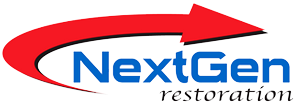PREVENTION
Moisture Control to prevent mold growth
The best way to prevent mold growth is to keep all materials in your home as clean and dry as possible. Keep your home well ventilated and the relative humidity between 30-50%.
Find and correct obvious sources of moisture, such as leaky faucets, dripping pipes or cold surfaces where moisture con-denses. Wipe spills immediately.
To reduce indoor humidity, vent bathrooms, dryers and other moisture-generating sources to the outside; use air condi-tioners and de-humidifiers; increase ventilation; use exhaust fans whenever, cooking, dish washing, and/ or cleaning.
Sources of standing water promote mold and bacterial growth. Cover sump pumps; enclose fish tanks; ensure that base-ment drains (for a/c hoses, humidifiers, washers) are not clogged.
Humidifiers
Recent studies by the Environmental Protection Agency (EPA) and the Consumer Product Safety Commission (CPSC) have shown that ultrasonic and impeller (or “cool mist”) humidifiers can disperse materials, such as microorganisms and minerals, from their water tanks into indoor air. Proper care and cleaning are important. Keep central furnace humidifier units properly maintained, in accordance with the manufacturer’s directions. Clean and change the filter on an annual basis. Condensation on walls or windows indicates that the humidity is too high and needs to be adjusted. High relative humidities will encourage unwanted microbial growth.
Mold Cleaning Tips
• Mold spores remain allergenic and toxic even when dead.
• Porous materials (e.g., carpet, sheetrock) from which microbial growth cannot be adequately cleaned must be removed from the building.
• Boric acid (borax) or hydrogen peroxide is very effective at killing molds. They do not have an odor and are rec-ommended for people with chemical sensitivities. However, small minorities of people have reported sensitivities to boric acid.
• Vacuuming may temporarily increase exposure to mold spores. The spores can pass through ordinary vacuum bags and remain suspended in the air for hours or days. Central vacuums that vent outside are recommended, or vacuums fitted with HEPA filters and micro-filtration vacuum bags to help minimize this exposure.
• Carpet cleaning should be performed by trained professionals that utilize hot water extraction. Ensure that the cleaned carpets dry out in less than 24 hours. Chemical cleaning methods can leave a residue that attracts soil and other contaminants.
• A HEPA (High Efficiency Particulate Air) air cleaner, with or without a charcoal filter, can be utilized in addition to source removal and ventilation to remove unwanted airborne contaminants. Relying on an air cleaner alone to solve a significant mold problem is insufficient.
Safety Precautions
• Spores are easily released into the air when moldy material is dried out. Mold counts are typically 10 to 1000 times higher than background levels during the cleaning of mold damaged materials. Take steps to protect your health during cleanup. When working on mold patches, always protect yourself with an appropriate face mask. For small localized areas, use an inexpensive disposable face mask (N95), which you can buy at a hardware store; for larger areas, use a full-face respirator with an approved, disposable HEPA filter, which you can obtain from a safety supply store.
• Never mix ammonia detergent with bleach, as it can release dangerous chlorine gas.
• Always ventilate your work area when using bleach (Clorox). If possible, open two opposite outside doors or windows. A fan will increase airflow. Position it so that the Clorox fumes are directed away from the breathing zone.
• Never use a gasoline engine indoors (e.g. pressure washer, generator, etc.)—You could expose yourself and your family to carbon monoxide.
• If you see moisture condensation on the windows or walls, it is also possible that you have a combustion problem in your home. It is important to have sufficient fresh air available for fuel burning appliances, such as the furnace, water heater, stove/range, clothes dryer, as well as a fireplace. A shortage of air for these appliances can result in back drafting of dangerous gases such as carbon monoxide into the home. To prevent back drafting of air, you need either open vents or a ventilation system that brings fresh air into the home to replace air that is exhausted out. Have your local utility company or a professional heating contractor inspect your fuel-burning appliances annually.
Protective Gear
Mold is a contaminant, presenting health hazards. Protect yourself during clean up using protective gear such as:
• Disposable plastic gloves.
• Respirator with a particulate filter, N-95 respirator, or half-face respirator with a HEPA (High Efficiency Particulate Air) filter.
• Goggles or protective eyewear.
• Disposable full body clothing, coveralls, or a lab coat.
• Head gear.
• Rubber boots or foot coverings.


Leave A Comment